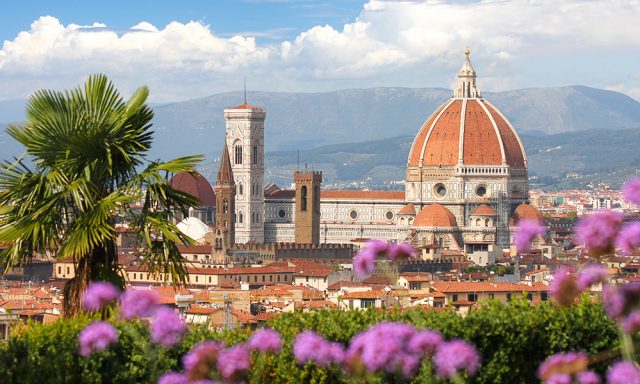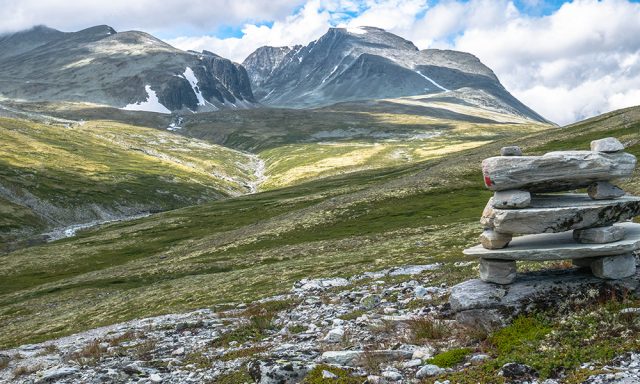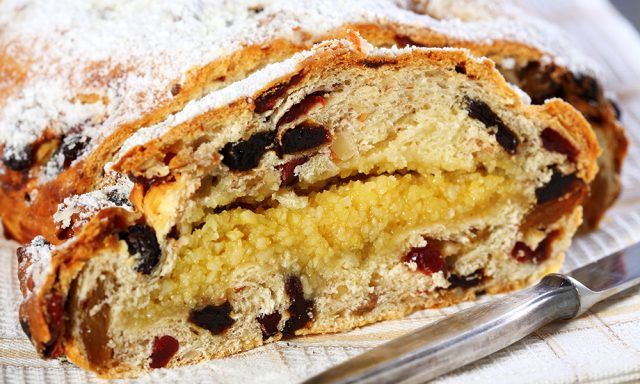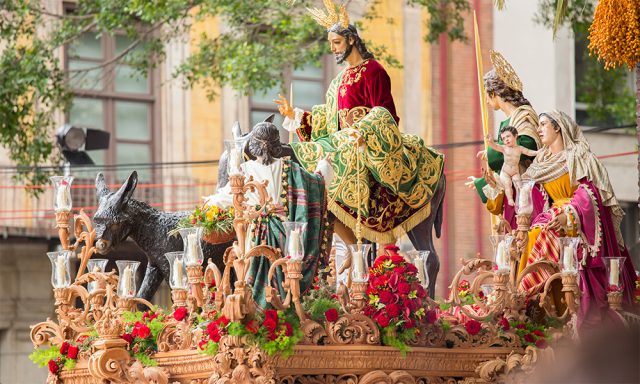Many of us will celebrate this weekend feasting on chocolate and hunting for Easter eggs, but the traditional Easter varies depending on where you are in the world. As we’ve travelled across Europe, we’ve been delighted to come across a wealth of unique and interesting customs. Here are a few of our favourite ways to celebrate Easter that we’ve encountered on our travels.

One of the world’s most dramatic Easter traditions takes place in the Italian city of Florence. Each year the city celebrates Easter Sunday by setting fire to an elaborate, three-storeys-high wagon in the Piazza del Duomo. Crowds descend on the piazza to witness the spectacular fireworks display, which is accompanied by a procession in which participants dress in traditional costumes.
Known as the Scoppio del Carro (literally the ‘Explosion of the Cart’) the ceremony is over 350 years old and the ornate, eponymous cart was originally crafted in 1622.
You can visit Florence on Headwater’s Chianti Classic Walk. The historic city, home to the grand Duomo and world-famous Uffizi Gallery, is only an hour from our hotel in Colle di Val d’Elsa.

Crime stories are synonymous with Easter in Norway. The tradition of “Easter crime” dates to 1923 when two crime authors advertised their book with a fake headline about an Easter train robbery on the front of Norway’s leading newspaper.
In the story, the thieves escaped by skiing through Norway’s snowy mountains. The Norwegian public fell in love with the elaborate advertising campaign, and the tradition of telling crime stories at Easter was born!
Today, Easter is the date for any aspiring Norwegian crime writer to launch their novel. Publishing houses across the country release the latest page-turners at this time, and copies are snapped-up by Norwegians who devour the books as they stay in their cosy cabin in the mountains, the traditional place to spend the Easter holidays.
Find out more about the Norwegian way of life and explore the country’s spectacular countryside on our walking holiday, Guided Walking in Venabu.
Explore walking holidays in Norway >

Children all over the world enjoy Easter egg decorating. However, in Switzerland, the past time involves added jeopardy as adults attempt to smash the painted eggs that children have lovingly decorated!
The tradition is known as ‘Zwanzgerle’ and it is a popular game at Easter time. Adults don’t go around smashing eggs without consent. Children challenge grown-ups to break their Easter eggs using a 20-cent coin. If the adult cannot break the egg the child gets to keep the coin, but if the egg is damaged, the adult gets to keep both the coin and the egg! The tradition began as a way to teach children the value of pocket money.
You can explore Swiss customs and the breath-taking natural beauty of Switzerland’s Bernese Oberland on our Classic Swiss Alps self-guided walking holiday.
See walking holidays in Switzerland >

Let us turn our attention to culinary traditions – one of our favourite topics! Throughout Europe bread has played a significant part in celebrating the Easter holidays. From hot cross buns in the United Kingdom to pizza di Pasqua in Italy, baked goods packed with dairy products, fruit and spices play a significant role (no pun intended) in heralding the end of Lent, a period when these ingredients were typically forbidden.
At Headwater, one of our favourite types of traditional Easter bread is the Dutch paasbrood. With its origins in the Catholic corners of the Netherlands, paasbrood is seasoned with dried fruit and almond paste giving it a distinct and mouth-watering flavour. Traditionally, it is baked as a round loaf or a roll with a hole at the top. An egg is then pressed into the hole to form a miniature baked nest, but versions without the egg are also common.
Discover more Dutch traditions with our self-guided cycling holiday, Pearls of Holland Cycling, where we travel from Amsterdam to Delft to Gouda. There are plenty of opportunities for gastronomic experiences along the way!
View our cycling holidays in the Netherlands >

Holy Week, or Semana Santa as it is known in Spanish, takes place in the lead-up to Easter weekend. The week is celebrated across Spain but the celebrations in Seville are world-renowned. Semana Santa de Seville is one of the city’s two largest fiestas and the festival is steeped in history.
From Palm Sunday through to Easter Sunday, processions march across the city as hundreds of penitents are led by local church brotherhoods to the city’s ornate cathedral. The highlight of these processions are the elaborate pasos, floats carved from wood with lifelike depictions detailing the crucifixion of Christ.
The pasos are unique works of religious art, some dating as far back as the 17th century. To bear a paso through the streets is a great honour, however, the job requires months of preparation. With the pasos weighing as much as 2,000kg, each bearer, or ‘costaleros’, must support a weight of around 50kgs as they march through the streets.
You will have an opportunity to explore the magnificent city of Seville on our self-guided cycling holiday, Cycling in Andalucía: Seville to Cadiz.